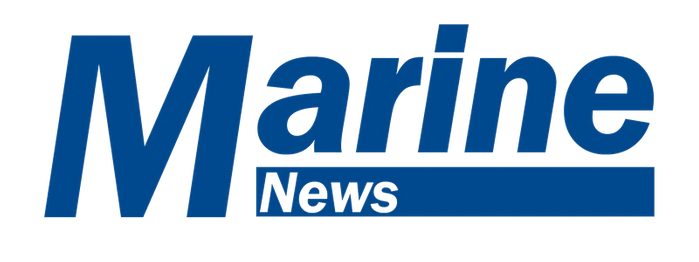Column
Washington Watch
Inland Operators Benefit from Supply Chain Focus
It appears the federal government has finally awakened to the fact that inland port and waterway infrastructure investments are critical to keeping the supply chain and U.S. economy moving.
By Jeff R. Vogel, partner, Cozen O’Connor’s Transportation & Trade Group
While much of the maritime legislative and regulatory focus in 2022 has been on supply chain capacity issues at major seaports, such as the Ports of Los Angeles and Long Beach, inland vessel and marine terminal operators may end up as direct beneficiaries. It appears that the federal government has finally awakened to the fact that inland port and waterway infrastructure investments are critical to keeping the supply chain and United States economy moving. As a result, recent Congressional actions with regard to both the National Defense Authorization Act and the Water Resources Development Act create clear indications that Fiscal Year 2023 may bring unprecedented funding opportunities for inland maritime stakeholders.
Port Infrastructure Development Program
At the time of writing, the House of Representatives is preparing for floor debate with regard to the annual National Defense Authorization Act (NDAA). While the process is filled with partisan controversy, the included maritime title appears to be one of the less controversial areas. More importantly, the maritime title would authorize historic funding in direct support of inland port infrastructure through the Maritime Administration’s (MARAD) existing programs. Specifically, the NDAA includes a $685 million authorization for MARAD’s Port Infrastructure Development Program (PIDP), which provides grants for projects that improve the safety, efficiency, or reliability of the movement of goods through ports and intermodal connections to ports.
The proposed funding authorization would slightly exceed the historic PIDP funding that was appropriated by Congress in Fiscal Year (FY) 2022. The Infrastructure Investment and Jobs Act (Pub. L. 117-58, November 15, 2021) (Bipartisan Infrastructure Law) appropriated $450 million for the PIDP, which was supplemented by a further $234,310,000 under the Consolidated Appropriations Act, 2022 (Pub. L. 117-103, March 15, 2022) (FY 2022 Appropriations Act). On May 6, 2022, MARAD issued an amended Notice of Funding Opportunity, announcing the availability of the entire $684,310,000 in PIDP grant funding.
As a general matter, PIDP funding cannot exceed eighty percent (80%) of the total project costs. However, for certain inland ports, it is notable that MARAD can increase the share above this level for projects located in a rural area (defined to mean an area located outside a 2010 Census-designated urbanized area) or small projects at small ports (defined to mean a port with annual cargo tonnage of less than 8 million short tons seeking less than $11.25 million in funding).
America’s Marine Highways
Moreover, the House NDAA would authorize $15 million for the American Marine Highways program, which would be renamed the United States Marine Highway Program under a separate section of the NDAA. Along with the name change, the NDAA would make substantive changes to the program, requiring qualifying projects or routes to (1) provide a coordinated and capable alternative to landside transportation, (2) mitigate or relieve landside congestion, or (3) promote marine highway transportation. The bill would also expand the program from solely grants to also include contracts and cooperative agreements. In addition, the NDAA would add a mandatory preference “to those projects or components that present the most financially viable transportation services and require the lowest percentage Federal share of the costs.” While applicants have always been required to demonstrate that the proposed project is financially viable, and have been required to provide at a 20% cost-sharing commitment, this amendment would add a new level of importance to such elements during MARAD’s award decision process. Accordingly, in developing their applications, inland operators would need to concentrate additional focus on the quantitative measurements demonstrating a proposed project’s financial viability.
Similar to the PIDP, the potential America’s Marine Highway funding would follow-up on a very successful FY 2022 for the program. The Bipartisan Infrastructure Law appropriated $25 million for the program, while the FY 2022 Appropriations Act appropriated an additional $14,819,000. On April 26, 2022, MARAD published an amended Notice of Funding Opportunity to release the additional funding, raising the total available funding to $39,819,000, and extending the application deadline to June 17, 2022. MARAD anticipates making its final award decisions later this year. In April, MARAD also announced a new marine highway route designation (M-3 Kaskaskia River in Illinois) as well as new project designations for an existing ferry service across Lake Michigan between Ludington, Mich., and Manitowoc, Wis., and for the northwest connection between Alaska, Hawaii and Washington.
Water Resources Development Act
In addition to the NDAA, the Water Resources Development Act (WRDA) bill continues its steady path towards enactment on a two-year cycle. On June 8, 2022, the House passed its version of WRDA with a vote of 384-37, signaling the bill’s strong bipartisan support. The House version would authorize $25.3 billion to help fund 22 Army Corps of Engineers (UASCE) dredging, storm and flood protection, and ecological restoration projects. The bill is expected to be taken up by the Senate in the coming weeks. Notably, the Senate Environment and Public Works Committee approved its version of WRDA on May 4, 2022, which would fund 21 USACE new or modified projects. However, unlike the House version, the Senate version would also increase the cost share to 75% from general Treasury funds, correspondingly decreasing the cost share to 25% from the Inland Waterways Trust Fund. This would follow the trend of the 2020 WRDA, which moved the relative cost share between general Treasury funds and the Inland Waterways Trust Fund from 50%/50% to its present 65%/35%. The increasing use of general Treasury funds allows the Inland Waterways Trust Fund to stretch much farther, with clear benefits for inland vessel and marine terminal operators.
While both the NDAA and WRDA await final Senate consideration, and likely will require bicameral conferences to resolve differences between the House and Senate versions, it appears that there is strong bipartisan support for tremendous inland port and waterway funding. As always, inland maritime stakeholders should continue to express strong support to their Congressional representatives for the PIDP, America’s Marine Highways, and WRDA, to ensure that the current momentum is sustained.

About the Author:
Jeff Vogel is a partner in Cozen O’Connor’s Transportation & Trade Group. He focuses his practice on strategic and operational matters affecting the United States maritime industry and on government contracts across all industries. Jeff can be reached at jvogel@cozen.com.
